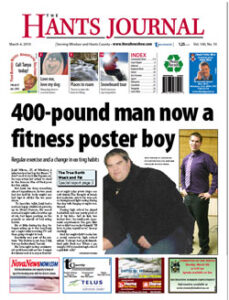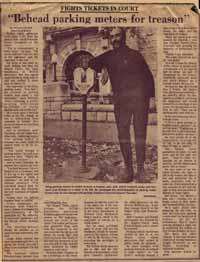Something to Upset Everyone
Fears of a funny man
Daily News
Jan 18 1986
The whole audience is rushing towards the stage with intent to wreak grievous bodily harm upon John Wing Jr.
But Wing as a strategy: “As long as they’re laughing, they can’t get up.”
The audience at the Lower Deck laughed abundantly Wednesday night, but the Toronto-based comedian confessed to a few worried moments sparked by a beefy heckler a few tables away.
Wing handled him easily: “I’d give you my autograph but who’d read it to you?”
It got a laugh, even from the heckler. Wing has a fusillade of put-downs from the gentle to the brutal. Only a few are printable:
“Why don’t you sit on the mike so we can hear what you have to say before you open your mouth?”
“Isn’t is a shame when cousins marry?”
“I was going to do my (bleep) impression, but you beat me do it.”
“Wop I go down to where you work and kick burgers off the grill?”
“What pharmaceutical company is responsible for your condition?”
“You shouldn’t talk so much— people will think you have a big mouth. But considering your sexual preferences that must come in handy.”
Nothing is sacred to Wing.
“Happiness is a warm nun,” he sang in one number about the Pope. The audience was uneasy and he knew it.
His material isn’t all that funny but it’s fast, escpecially in a pub where people will talk right through the performance. In a university crowd where people listen more, he’ll slow down.
In his five years in the trade he’s learned audiences can be hostile, but mostly because they’re drunk. One man pulled a knife on him after a performance in Florida a year ago. “The bouncers beat the hell out of him. I just stood there and breathed hard.”
He’s had plastic cream containers thrown at him at Yuk Yuks Komedy Kabaret in Toronto where he works regularly as a comedian and emcee.
And one drunken heckler threw pennies at him all through his act. “He finally got me right in the forehead.”
But only once has he walked off stage. That was in a performance before an exceptionally drunk and rowdy crowd in Guelph. His fee was $250, a record. “The boss said I could cut my act short if I wanted to, so I did. He even paid me, too.”
Wing, 25, quit his English studies at the University of Windsor to join a rock band five yers ago. It promptly folded and he auditioned at at Yuk Yuks. “The first night it was great they went crazy. The next week I died a horrible death.”
He bombed once a week for eight months straight, performing on Yuk Yuk’s amateur nights. “I didn’t know anything about comedy — I had great presence, but no material.”
He watched paid comedians at Yuk Yuks every night during his first year. Now he has half a dozen songs in his repertoire and various impressions that include a Neil Young ‘fixed’ by his parents before puberty, a wheezy and puking Joe Cocker and a tantrum-prone baby Clint Eastwood.
He also has a persona, the perennial virgin and high school nerd. “It’ll have to go. I get laid so much now it doesn’t feel real.
“Well, I do have a girlfriend ad I’m a lot more relaxed than I used to be and I know more about people. (On the road) I get my chances.”
And he even makes a living. “This is the first year when I’ve made five figures. My first salary approached two figures”. That was $9 he got for a performance at Ryerson while still apprenticing at Yuk Yuks.
Offstage, Wing is quiet non-drinker (“I hate the teaste.”) He labors at his jokes, writing them down and reciting them at least 50 times before trying them on an audience.
“I think of my best jokes in bed. The only thing worse than bombing on stage is bombing in bed. So I’ll try something not quite kosher, or something not done.”
It’s this mood of deperate spontaneity that gets him most of his laughs– at least the ones on stage.
 I’ll never fly again
I’ll never fly again


